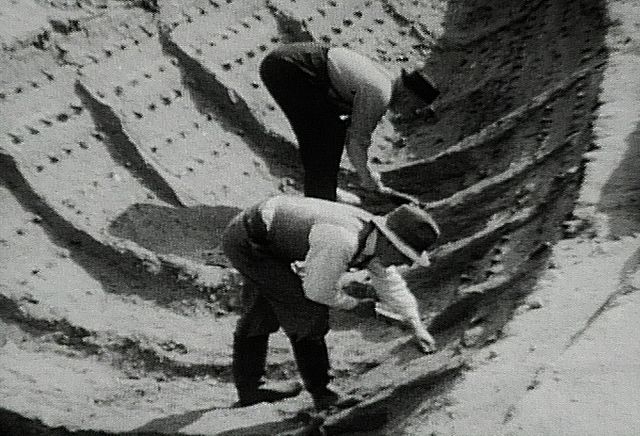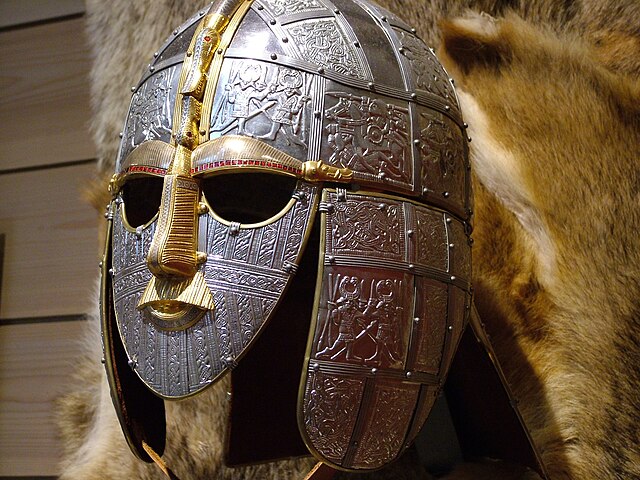The Torslunda plates are four cast bronze dies found in the Torslunda parish on the Swedish island Öland. They display figures in relief, representing what are presumed to be traditional scenes from Germanic mythology. The plates are moulds designed for production rather than display; by placing thin sheets of foil against the scenes and hammering or otherwise applying pressure from the back, identical images could be quickly mass-produced. The resulting pressblech foils would be used to decorate rich helmets of the sort found at Vendel, Valsgärde, and Sutton Hoo. Two of the plates may have been made as casts of existing pressblech foils.
The four Torslunda plates
Plate 108869_HST
Plate 618349_HST
Plate 618350_HST
The Sutton Hoo helmet is a decorated Anglo-Saxon helmet found during a 1939 excavation of the Sutton Hoo ship-burial. It was buried around the years c. 620–625 CE and is widely associated with an Anglo-Saxon leader, King Rædwald of East Anglia; its elaborate decoration may have given it a secondary function akin to a crown. The helmet was both a functional piece of armour and a decorative piece of metalwork. An iconic object from an archaeological find hailed as the "British Tutankhamen", it has become a symbol of the Early Middle Ages, "of Archaeology in general", and of England.
The ship impression during the 1939 excavation; Basil Brown is in the foreground, and Lieutenant Commander John Kenneth Douglas Hutchison in the background.
A replica helmet showing designs 1, 2, 4 and 5, located (1) above the eyebrows and on the cheek guard, (2) on the skull cap, (4) on the cheek guard and skull cap, and (5) on the face mask
One of the four Torslunda plates, showing a horned figure similar to those in design 1. His missing right eye suggests that he is Odin.
The Pliezhausen bracteate shows a scene nearly identical to design 2.








